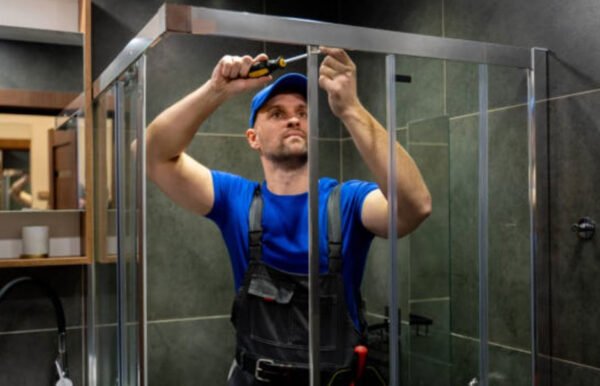How Modern Construction Allows Improved Home Customization

Changing consumer preferences, technological advancements, and sustainability concerns are driving a dynamic evolution in the residential construction industry. Homeowners now actively seek personalized spaces that align with their lifestyles while mitigating environmental impact; this pursuit continuously shapes trends within residential construction. Our article explores these evolving trends—customization, smart home integration, energy efficiency—and emphasizes how modern construction equipment is pivotal to shaping future home building methods.
Customization
Contemporary residential construction: a domain where customization emerges as its hallmark. Homeowners now, more than ever, seek homes that mirror their unique personalities and preferences; this quest for identity extends from architectural design–incorporating innovative structures and spatial arrangements–to the selection of interior finishes. Customization offers an avenue for homeowners to craft spaces in perfect alignment with lifestyle choices, aesthetic sensibilities – even functional necessities are taken into account.
Responding to this demand, builders and architects offer customizable floor plans; they provide an array of design options and finish selections. Open-concept layouts, flexible living spaces–features that embody modernity—are now a standard part in home construction. Furthermore: with customizable smart home technology at hand–homeowners can tailor their houses not just for current needs but also future preferences.
Smart Home Integration
Residential construction increasingly integrates smart home technology, providing homeowners with amplified control over their living environments. This not only enhances convenience and comfort but also bolsters energy efficiency: programmable thermostats; automated lighting systems – even voice-controlled assistants are some of the notable features in this innovative setup. Consequently, homeowners can remotely manage their domiciles and optimize energy usage.
The ascent of the Internet of Things (IoT) further establishes a pathway for interconnected smart home ecosystems: diverse devices and systems can communicate, collaborate–thus fostering seamless integrated living experiences. Indeed; from security to surveillance, entertainment and environmental control—smart home technology is revolutionizing homeowners’ interactions with their living spaces.
Energy Efficiency
Driven by concerns over environmental sustainability and escalating energy costs, residential construction now places a central focus on energy efficiency. With an aim to minimize energy consumption and reduce carbon footprint, builders and developers adopt more frequently the integration of new design principles as well as technologies in their projects.
Modern homes integrate key energy-efficient features: high-performance insulation; energy-efficient windows and doors; solar panels–a sustainable power source, and appliances designed for optimal energy consumption. In addition to these elements—passive design strategies are crucial contributors towards a reduced reliance on artificial heating/cooling systems while maximizing overall efficiency: orientation, shading, and natural ventilation. Indeed—in optimizing the use of renewable resources while minimizing environmental impact—it’s an indispensable factor.
Construction Equipment
Advanced machinery, tools, and technologies of modern construction equipment pivotally realize the latest trends in residential building. This advanced equipment allows builders and contractors to streamline their construction processes: it enhances productivity; delivers high-quality homes efficiently – all within cost-effective measures.
People often seek a construction equipment supplier to provide excavators, bulldozers, cranes and aerial lifts: these are the essential components of construction equipment. They facilitate site preparation; lay foundations – perform structural framing work–and execute finishing tasks with precision. Technological advancements in recent years have revolutionized this industry’s operations: GPS tracking allows for unprecedented accuracy; telematics provide real-time data insights – while autonomous machinery ensures not only efficiency but also safety during execution processes involved in complex constructions.
Incorporating Sustainable Materials and Construction Methods
The adoption of sustainable materials and construction methods is gaining momentum in residential construction, driven by growing environmental awareness and a commitment to reducing carbon footprint. Homeowners are increasingly prioritizing eco-friendly building materials and practices that minimize environmental impact while promoting health and well-being.
Builders and developers are exploring innovative materials such as recycled steel, reclaimed wood, bamboo, and low-impact concrete alternatives to traditional building materials. These sustainable materials offer benefits such as durability, energy efficiency, and improved indoor air quality, making them attractive options for eco-conscious homeowners.
Conclusion
Continuously evolving residential construction trends necessitate the embrace of innovation and sustainability to meet homeowners’ ever-changing needs and expectations. The future of residential construction is shaped by driving forces such as customization, smart home integration, energy efficiency, and modern equipment; these offer homeowners personalized living spaces that are both comfortable and sustainable.
To stay ahead of the curve, builders, architects and developers must actively embrace emerging technologies, design principles and construction practices; they need to prioritize innovation–notably in collaboration with environmental stewardship. In doing so: a brighter future – one that is both sustainable for homeowners as well as communities–can be built by the residential construction industry.



